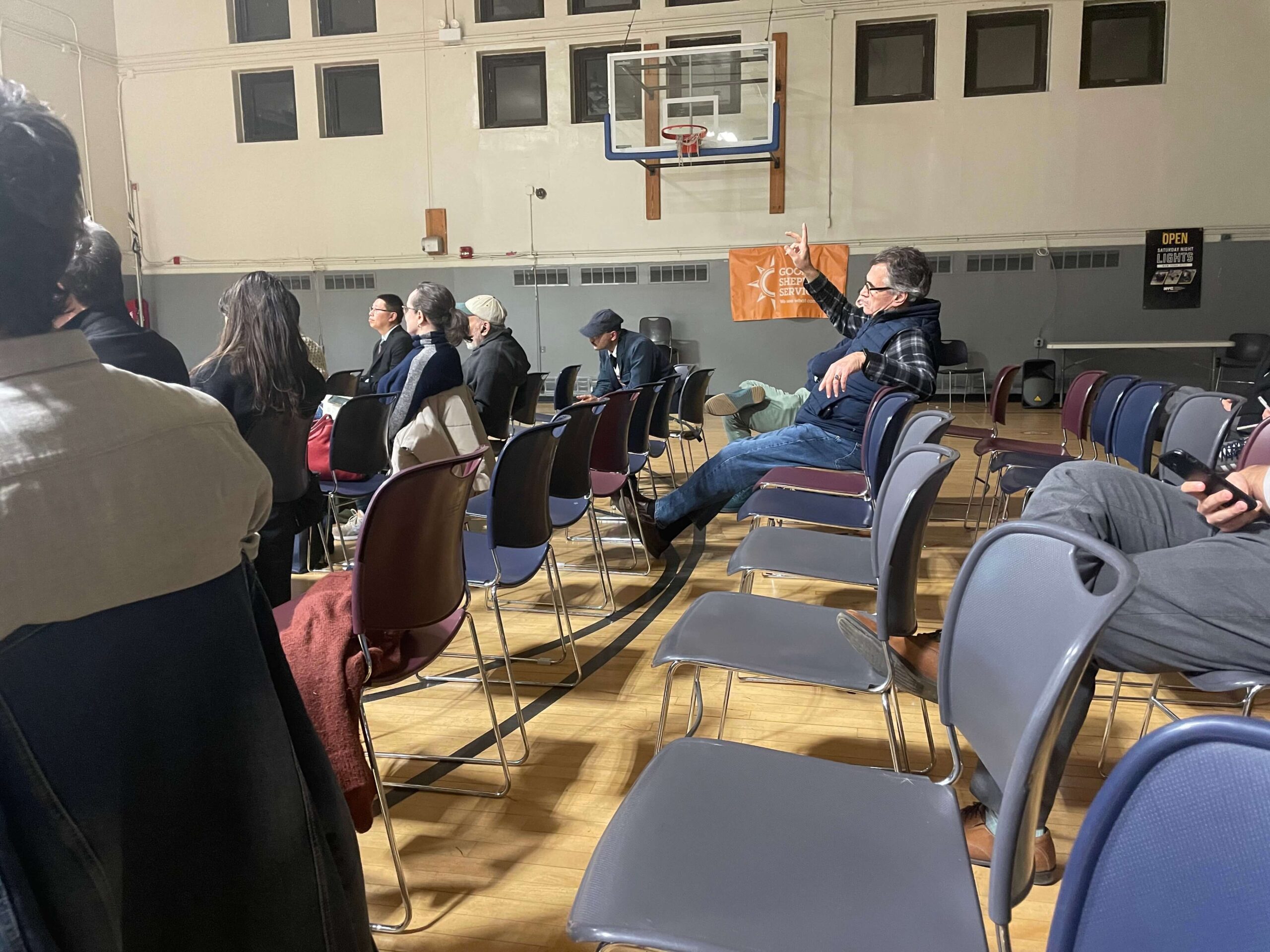The NYC Department of Transportation (DOT) met at the Miccio Center (110 W 9th St.) on December 7, updating the community on their Red Hook traffic study. DOT’s goal is to improve travel conditions for all street users (motorists, cyclists, and pedestrians.) This includes making conditions safer and improving quality of life.
Studies included measuring the speed of vehicles in certain areas, measuring the number of vehicles, bikes, and pedestrians in various areas at different times of day and during different seasons as well as using surveys to find areas that residents felt were unsafe.
In the community surveys, residents had a lot of truck-related concerns including safety, air quality, and noise. Some of the possible solutions are alternative truck routes, better truck enforcement for oversized vehicles, and better signage for off-route trucks. Some of the solutions like better signage can be done in the short term while changing the truck routes would likely take longer to happen.
The study also looked at pedestrian safety “Which found 88 injuries in 2020, 132 injuries in 2021, and 105 injuries in 2022,” said Harvey LaReau of the DOT who led the presentation. “In all three years, the vast majority of the injuries were to people in motor vehicles. There were also two fatalities from 2017-2023, one at a Vision Zero corridor on Court St. and one at a Vision Zero intersection on Court St. and Hamilton Ave.”
Vision Zero is NYC’s citywide initiative to eliminate death and serious injuries from traffic incidents. When a severe accident or fatality occurs, the DOT looks to make changes to improve safety at that location and this included the sites where the the two fatal accidents occurred.
Some areas the DOT is looking to target and make safer are Hamilton Ave. (at Court St, 9th St.,) Van Brunt St. (at Pioneer St., Sullivan St. and Walcott St.,) Clinton St. (at Hamilton Ave., Lorraine St. and Bay St.,) Columbia St. (at West 9th St., Lorraine St., and Bay St.,) and Richards St. (at Sullivan St. and Wolcott St.)
Interestingly, the study area showed that 27 percent of people in the study area (Red Hook) commute to work by walking or biking and 15 percent of people commute to work by driving. In NYC, only 11 percent of people walk or bike to work, while 27 percent drive. The statistics show that there should be less traffic in Red Hook because more people walk to work; however, the increase in last-mile warehouses means that there are a lot more trucks moving goods in Red Hook than in most other NYC neighborhoods which means more traffic. There are nine last-mile warehouses that fall within the area of the study.
“Just from observing, I’ve seen the Amazon facility has rows of sprinter vans that all come out every 20 minutes to make their deliveries,” said Jim Tampakis of Tamco Mechanical (54 Richards St.) “I can see the 640 Columbia St. site for Amazon looks like it’s about twice as big as the 270 Richards St. site. There’s going to be a lot of traffic going through there which goes right in front of the BASIS School [556 Columbia St.] which [Jo Goldfarb, who works at the school and also attended the meeting] is concerned about.”
Right now it is unclear how much traffic there will be once the new Amazon facility on 640 Columbia St. fully ramps up its operations.
Though there were only about 25 people in attendance at the meeting, those who were there were engaged, making a lot of comments or suggestions, while asking a lot of questions as well.
“My first time in Red Hook was in 2015 and at that time there was no street light on the corner of Pioneer and Van Brunt,” said Carly Baker-Rice of the Red Hook Business Alliance. “When you think about that now, it’s crazy. I spoke to another neighbor who said when she moved to Red Hook there was one traffic signal in the entire neighborhood.
“I think it’s important to remember that Red Hook is probably a few decades behind in getting our needs met in general. It sounds like a lot of the areas that were studied were the ones that had traffic signals, but so many of them don’t have them so I think it’s important that those areas are also studied. The point isn’t for us to solve Amazon’s problems, but to make things better for our community.”
The meeting concluded with Alexa Aviles saying, “There’s obviously a lot going on in Red Hook and a lot being planned. One of the important things in the various projects is access to data. We’ve been making sure that data that should be public information is public information.
“I’m here to continue to push the city and push all of the agencies to coordinate. I’m here at your disposal and thank you for being here.”
The DOT is continuing to collect data and will have a third public meeting sometime between June and September of 2024. The DOT will draft its final report from the study in October of 2024.









